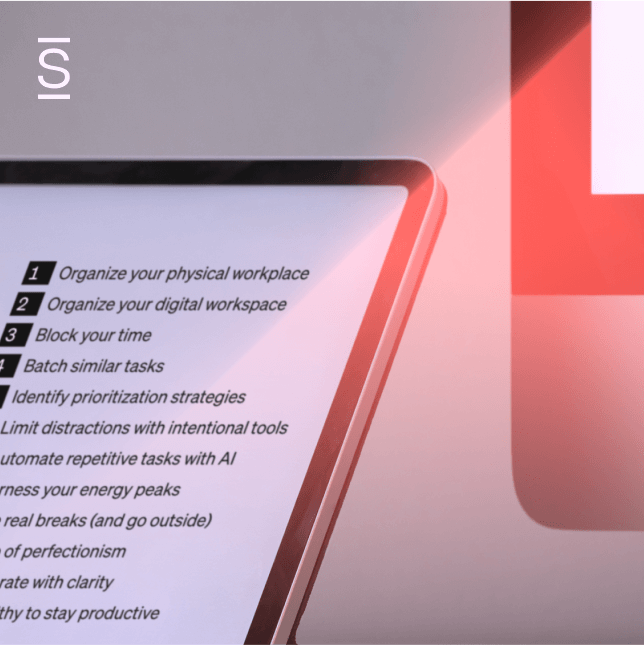How to give constructive feedback at work without crushing anybody’s soul
Everyone, at some point, learns the importance of constructive employee feedback or criticism when they need to give it to someone at work. Whether a colleague deleted that spreadsheet you worked on for three weeks or a co-worker always speaks over you in Zoom meetings, the day of reckoning will arrive. Are you ready? Do you know how to approach a sticky situation with grace?
According to an article by Forbes, many people are terrified by the idea of giving feedback to colleagues. They’re so afraid that they’d rather avoid it altogether. What if they hurt the other person’s feelings? What if it damages their relationship with that person? What if they just do it wrong? Those fears aren’t irrational. Though the benefits of constructive feedback far outweigh the risks, it can be a high-stakes game, but most people have never been properly trained on how to do it. And that’s a shame. Underestimating the importance of constructive feedback is one of the biggest mistakes people make on the job—whether on the giving or receiving end of the conversation.
When you resist giving feedback to colleagues, you’re passing up an opportunity to help a co-worker improve and grow. A recent study showed that most people want to hear non-critical feedback, particularly at work, as long as they can tell the difference between constructive criticism versus a personal attack. Still, managers often skip it for fear of just that—that employee will take it personally. But ultimately, feedback plays a crucial role in building a culture of teamwork and collaboration.
Learning to give (and take!) constructive criticism is like a craft. But the key is learning to do it well. You have to practice getting better, demonstrate empathy, and always remember that it needs to be about the open, positive sharing of perspectives, experiences, and creative ideas.
Giving feedback to colleagues: first, take a deep breath
Here at Simpplr, we’re big fans of constructive feedback, and we love to help people learn to do it well. Another study from the Harvard Business Review suggested that people are more receptive to getting advice than criticism. So let us offer some to you to help you understand the benefits of constructive feedback and how to give constructive criticism in the workplace.
1. Check in with yourself first
Take stock of your emotional state before you give feedback to colleagues. Take a deep breath and remember your purpose is to help someone improve, not to take out your frustrations. Put yourself in that caring mindset. We communicate a lot with our body language and tone. If you’re trying to hold back your anger while having a constructive feedback conversation, the person you’re speaking with will undoubtedly know it. Think of methods of providing feedback to employees that are non-threatening, and think about how you would respond to critical feedback if your roles were reversed.
2. Read the room
It’s also crucial that you have a good idea of how the person you need to give constructive feedback to is feeling. It doesn’t have to be an emotionally-charged conversation, and it’s up to you to set the stage. Choose a time and place that engenders a calm atmosphere and a safe space. Show respect by speaking privately with the person and selecting a time when there’s no rush. For example, stopping someone on their way out the door on a Friday evening is probably not the best tactic, nor is initiating your feedback conversation in a conference room full of co-workers.
Be aware of the other person’s mood: if they’re already stressed or upset, chances are good your message won’t go over well. No one likes an ambush, so if you need to set up some time with them, be transparent about the reason.
If feedback hasn’t been handled well in your organization in the past, chances are good that employee engagement is low. Don’t expect that to change overnight. Instead of jumping in with a list of key points and issues, take the time to build (and earn)trust.
3. Forget the sandwich
There are all types of constructive feedback. You may have learned methods of providing feedback to employees that use the “sandwich” method—starting with a positive comment, like, “this report looks fantastic!” Then, you add the constructive feedback: “but you need to be more careful with the spelling.” Finally, you end with another positive remark, like, “But overall, great job!” More recent research suggests this approach doesn’t work. “This approach is not supported by evidence, and it may actually have a detrimental effect by diluting or muddying the really important advice,” said Naomi Winstone, a cognitive psychologist from the University of Surrey in Britain. Communications lead Meredith Moore in Forbes suggested, “Start with your intention, why you’re the person sharing this feedback, and how you’re willing to help the person learn from it.”

4. Be a coach
Everybody knows this guy. Ted Lasso’s homespun charm is a spoonful of sugar with the real truths he needs to dish out. Ted gives his team members a lot of constructive feedback, and they love him for it. What’s his secret? He’s genuinely interested in bringing out the best in everyone. And his advice is always actionable. “A coach who says ‘try harder’ to an underperforming athlete might be less effective than a coach who says, ‘You need to develop greater strength, so starting tomorrow, you should spend 30 minutes each day lifting weights,’” said Catherine Sanderson, a psychologist at Amherst College.
The same principle works well in the office. In the example above, the problem that needed correction was spelling. When the manager used the “sandwich” method, the message was simply to improve. But how? A good coach offers suggestions for resources. For example, the manager could show the employee how to use a spelling dictionary or spell check features. That’s one of the benefits of constructive feedback—you get to share knowledge that’ll help others.
Often, however, behavior is the issue that affects the workplace, and when dealing with attitudes, managers need to be careful not to get personal. Non-critical feedback never focuses on personality. Instead, good managers should make the conversation impact- and action-based to avoid hurt feelings and defensiveness:
- Present the behavior without emotion: “You were more than a half-hour late to work.”
- Show the employee the impact of the behavior: “That caused us to delay our morning meeting.”
- Suggest an action the employee could take to prevent repeating the behavior: “Next time, please call in and let me know if you’re going to be late, so that we can reschedule the meeting.”
This and other methods of providing feedback to employees work to correct behavior without triggering anyone’s emotional response.
5. Ask questions
Ask questions and gather information. A conversation is a two-way interaction, and giving non-critical feedback is a chance to ask questions—for both parties. In other words, don’t assume you know everything there is to know about the situation.
Don’t be the manager trying to “solve” a “difficult” employee. Instead, approach your conversation as a joint problem-solving mission. Let them know you‘re open to changing your own behavior if it will help, and ask them if they have ideas about a better way to do things.
You might be surprised by what they have to say.
6. Be open, honest, and specific
What’s your trust quotient? Measuring whether employees trust you isn’t an exact science, but it can give you an idea if you’ve successfully built a culture of trust. And having that trust is essential to the success of constructive feedback. If employees know you have their best interests at heart, they’ll be much more willing to accept the benefits of constructive feedback in the spirit you intended. You can set that trust baseline in a few ways:
- Give feedback consistently: When employees are used to getting regular feedback, a constructive criticism conversation won’t be such a big deal.
- Give specific feedback: Giving feedback to colleagues should have both positive and negative elements. Rather than saying “you’re doing a good job,” tell employees exactly what you appreciate. You might say, “You handled that customer really well,” instead. When the feedback is negative, your objection should be just as clear. “You were a little dismissive of that customer’s complaint” is far more helpful than saying, “Why are you so rude?”
- Make feedback timely. There shouldn’t be any surprises in performance reviews. When you need to give colleagues feedback, make sure that it happens as quickly after an incident as possible. Confronting employees weeks or months later will lead to deep mistrust and cynicism. It’s easy to say, “If they do it again, I’ll talk to them.” But why would you want to give that employee a chance to repeat the behavior if you’re genuinely committed to helping employees grow? And meanwhile, your negative emotions can grow beyond your control.
Create a culture of constructive criticism in the workplace
If you want to build a culture of constructive feedback, today you can useintranet software to help build trust and keeps teams connected like never before. See how Simpplr can help you do all that and more, with one of the fastest deployment times in the industry.Request a demo today.
GET SIMPPLR
Connect with Simpplr
Dont forget to share this blog!


















